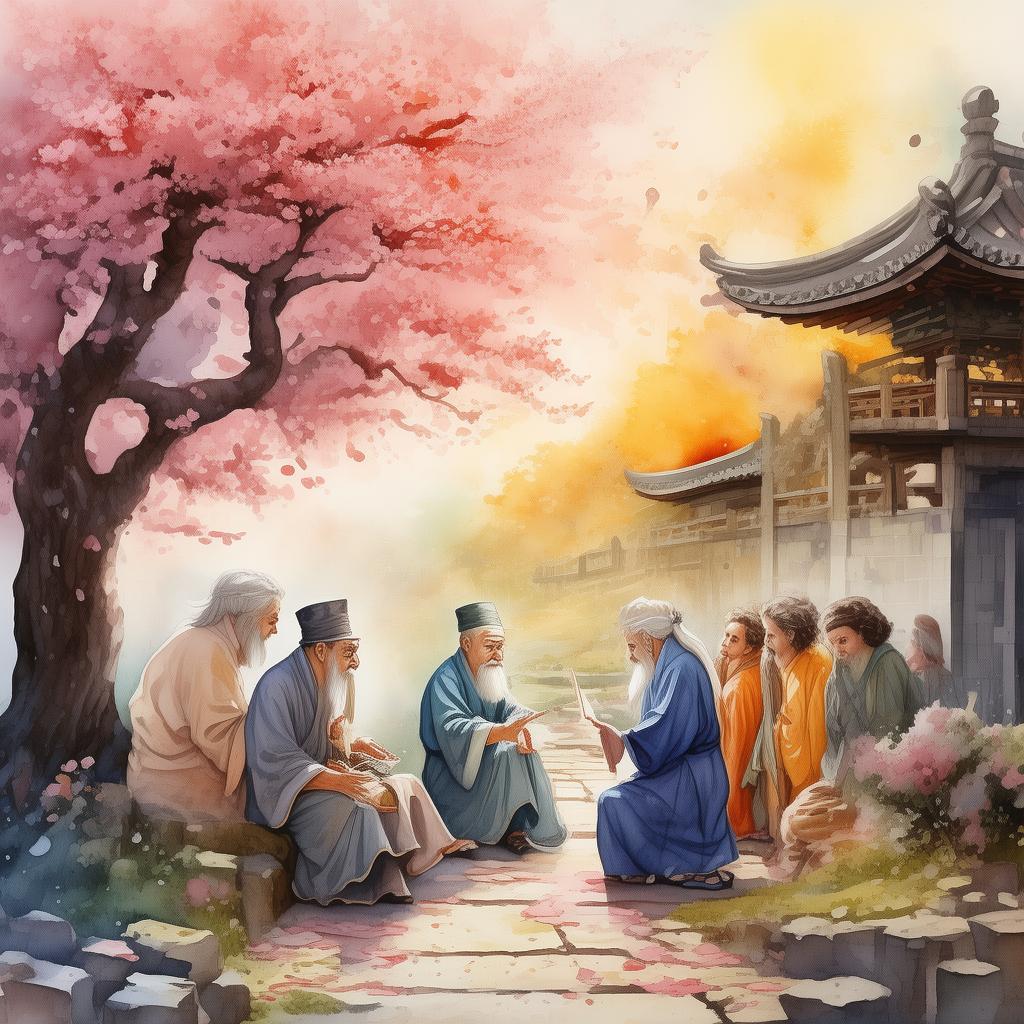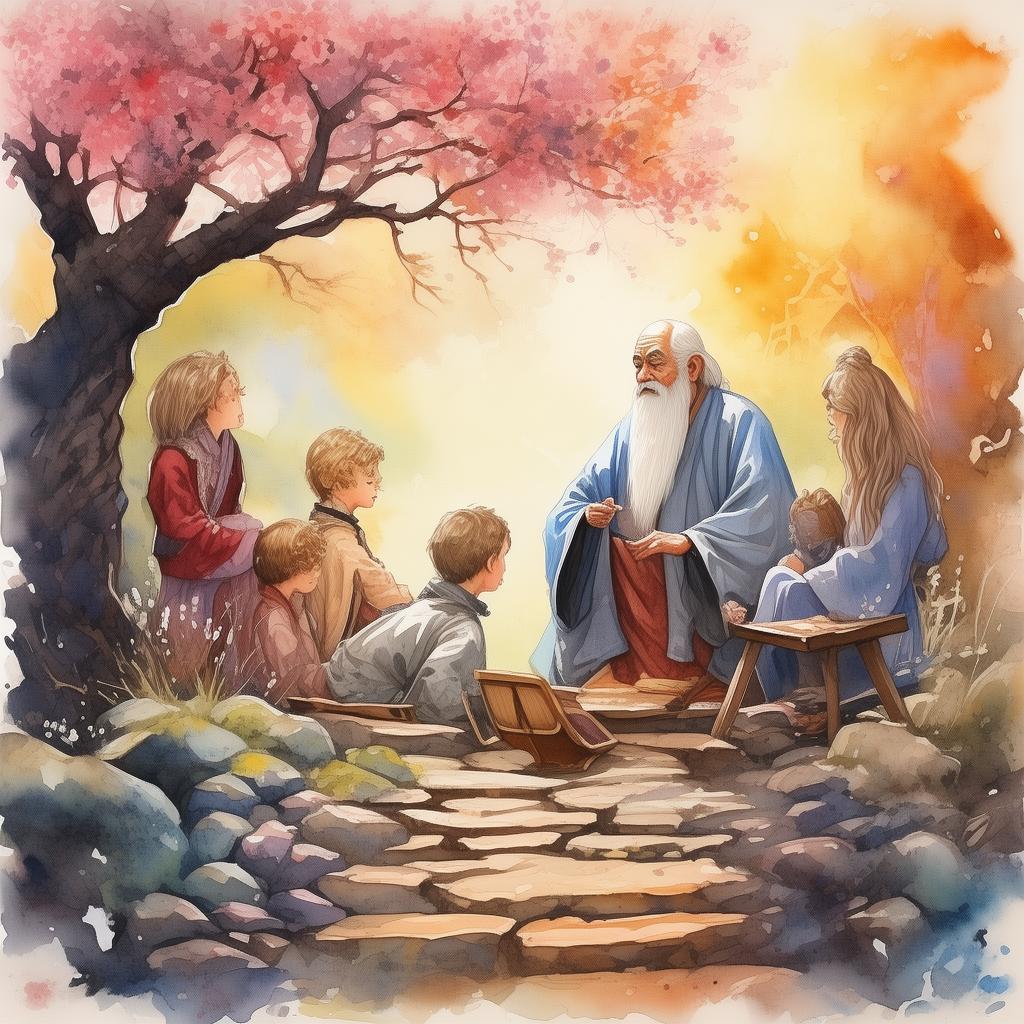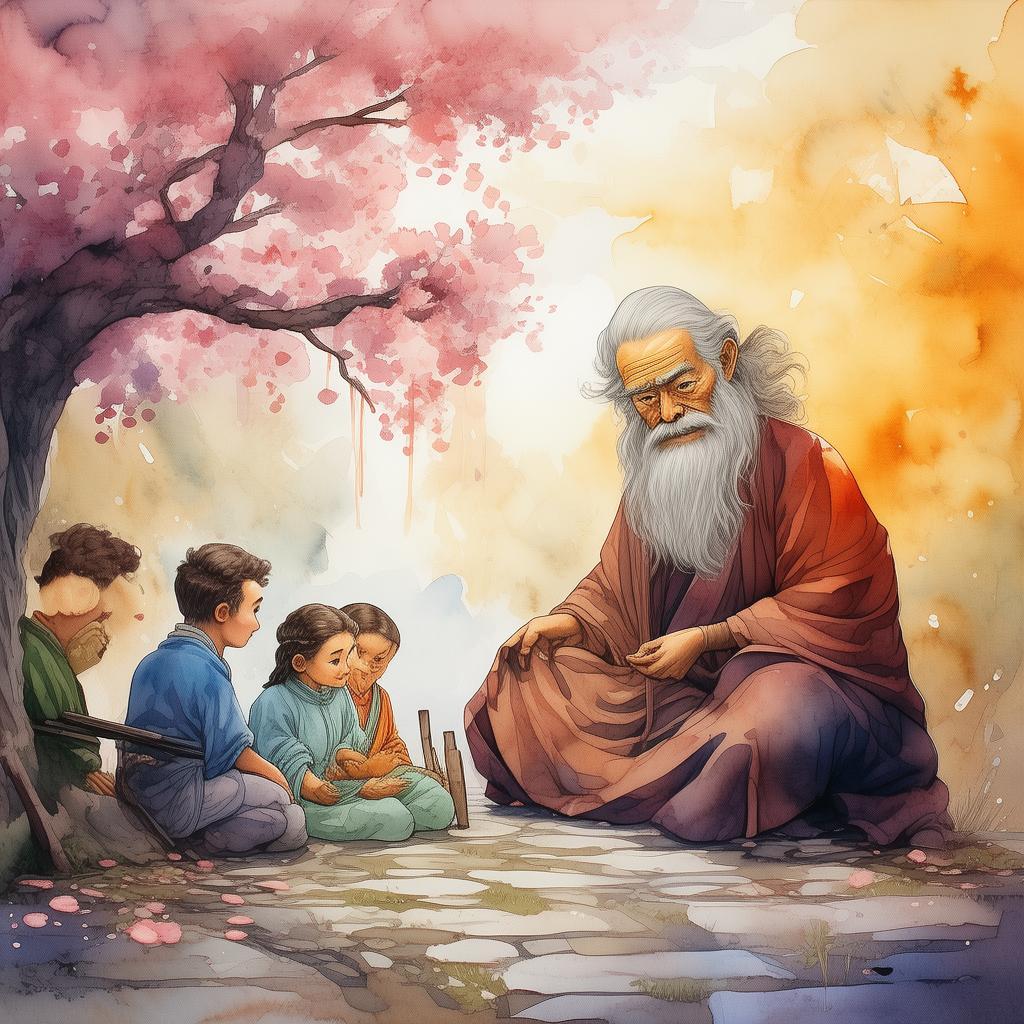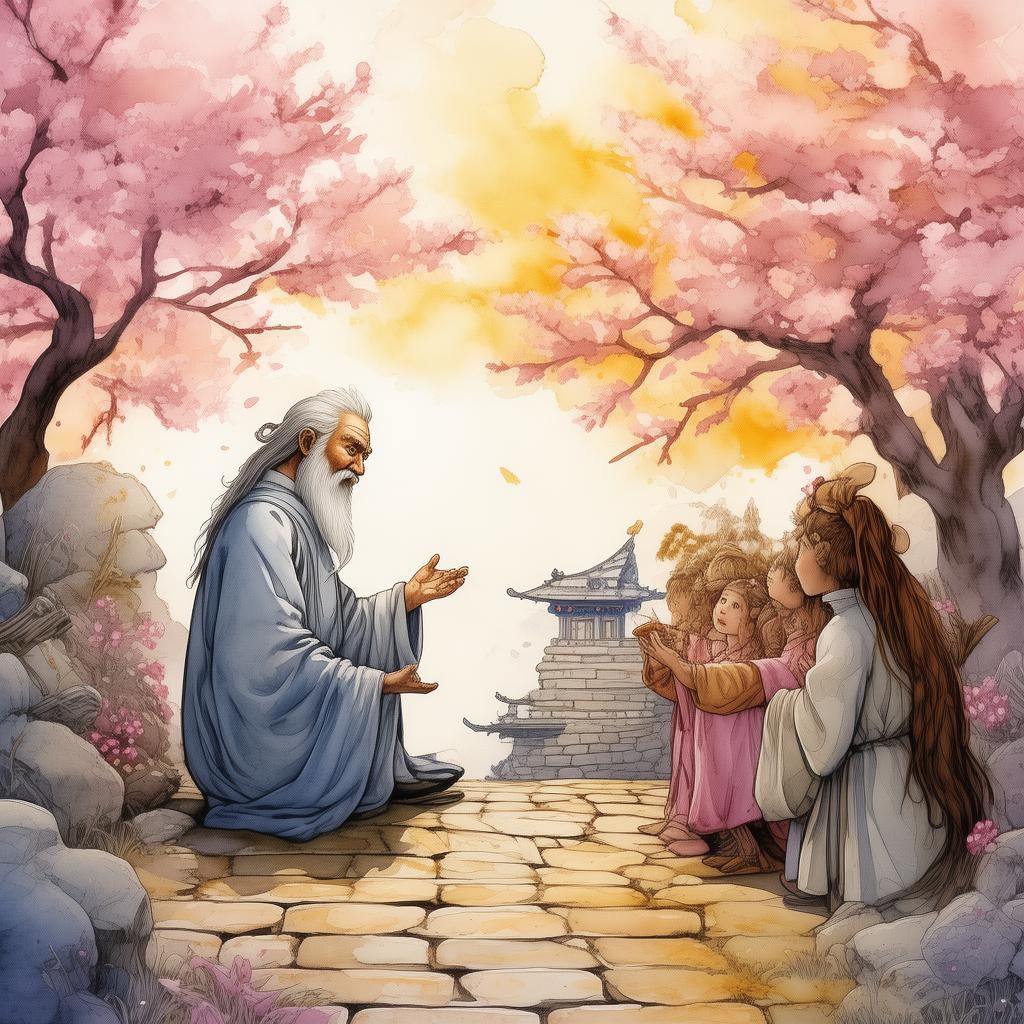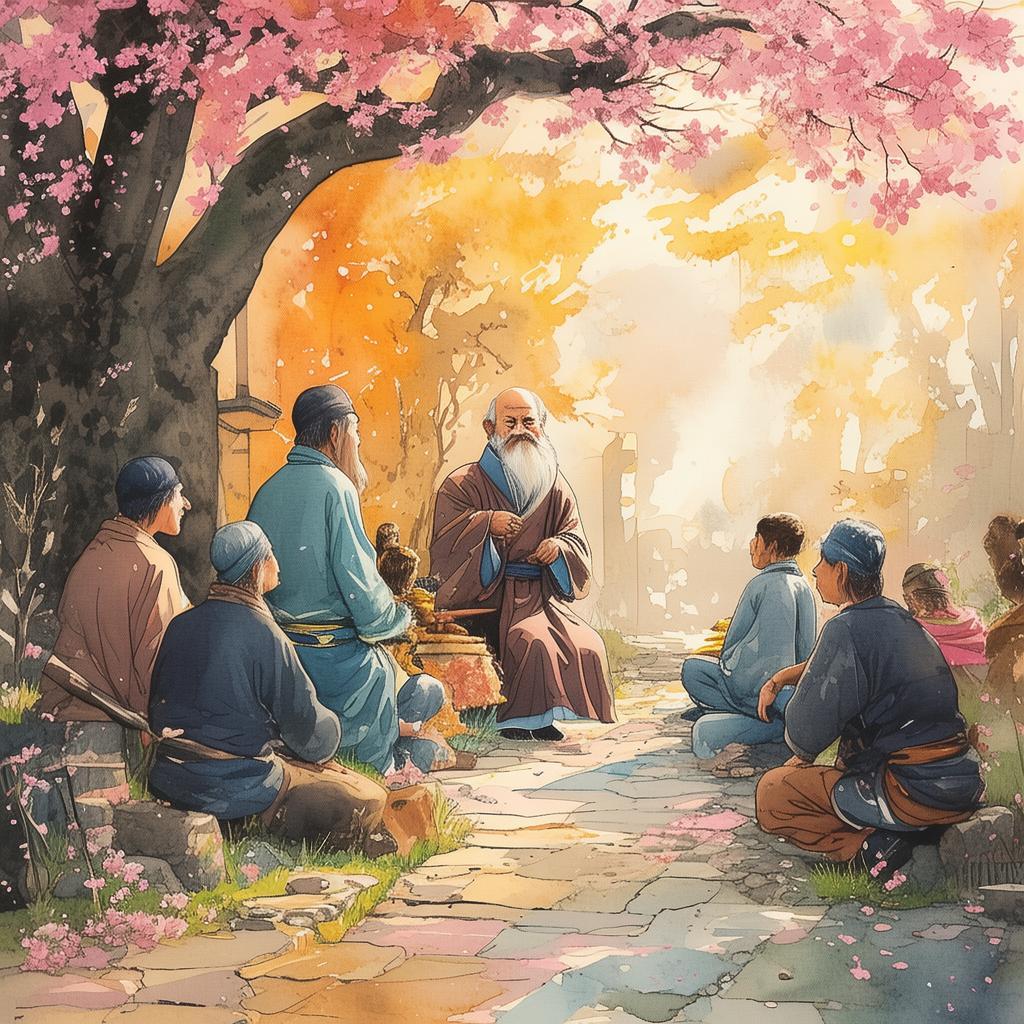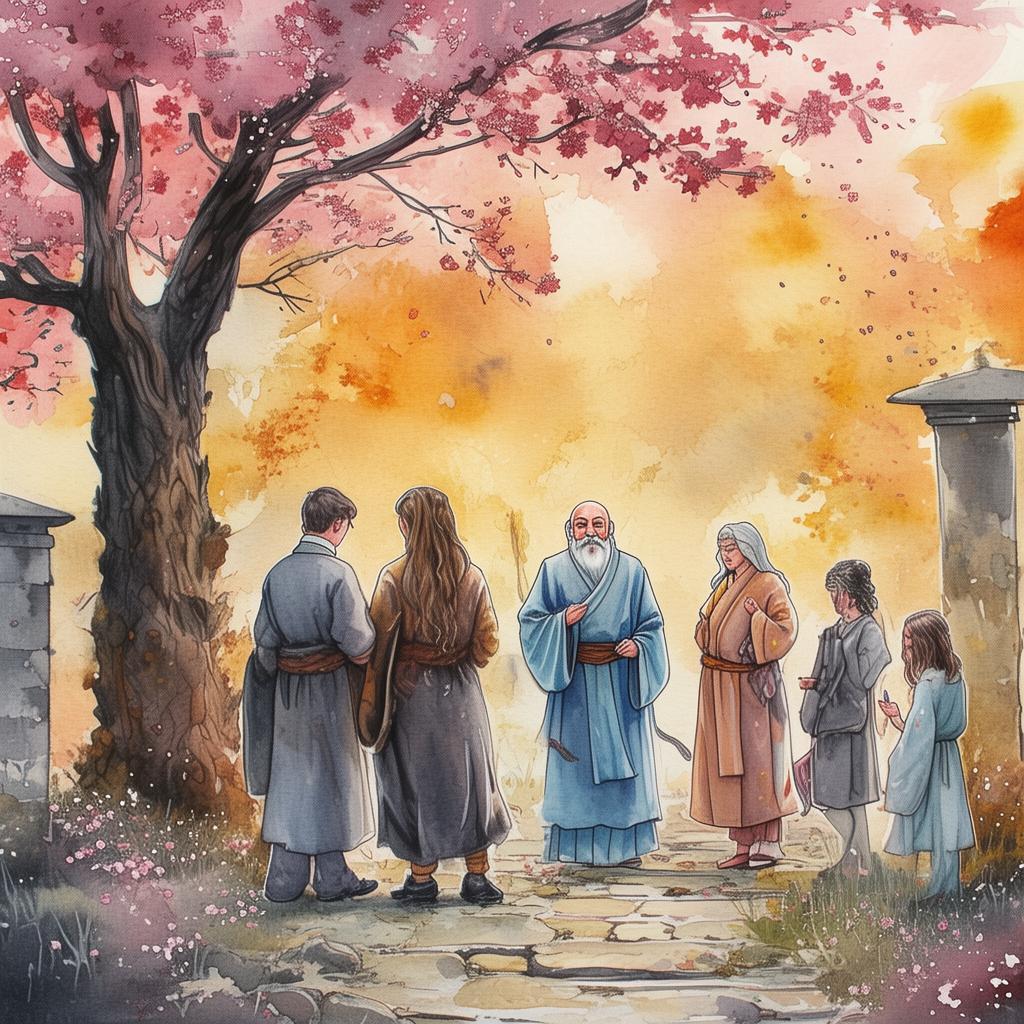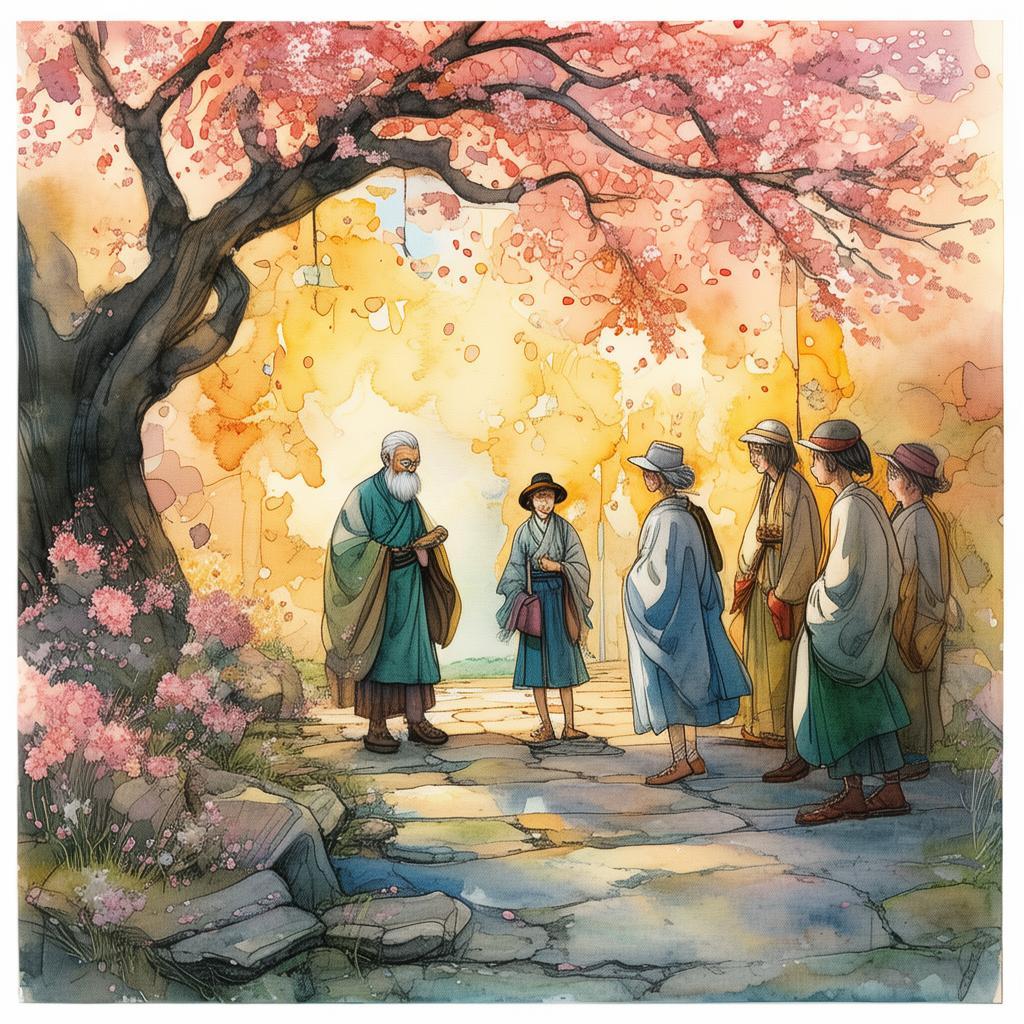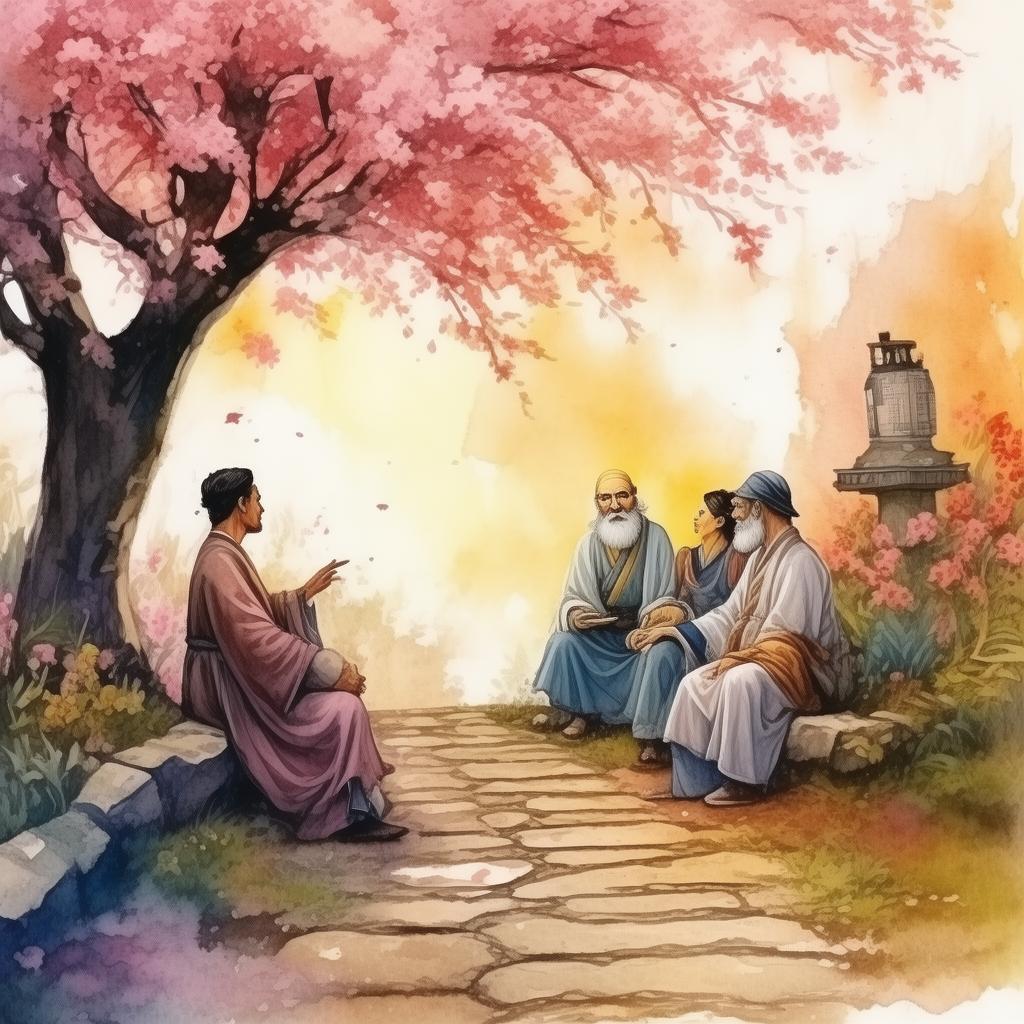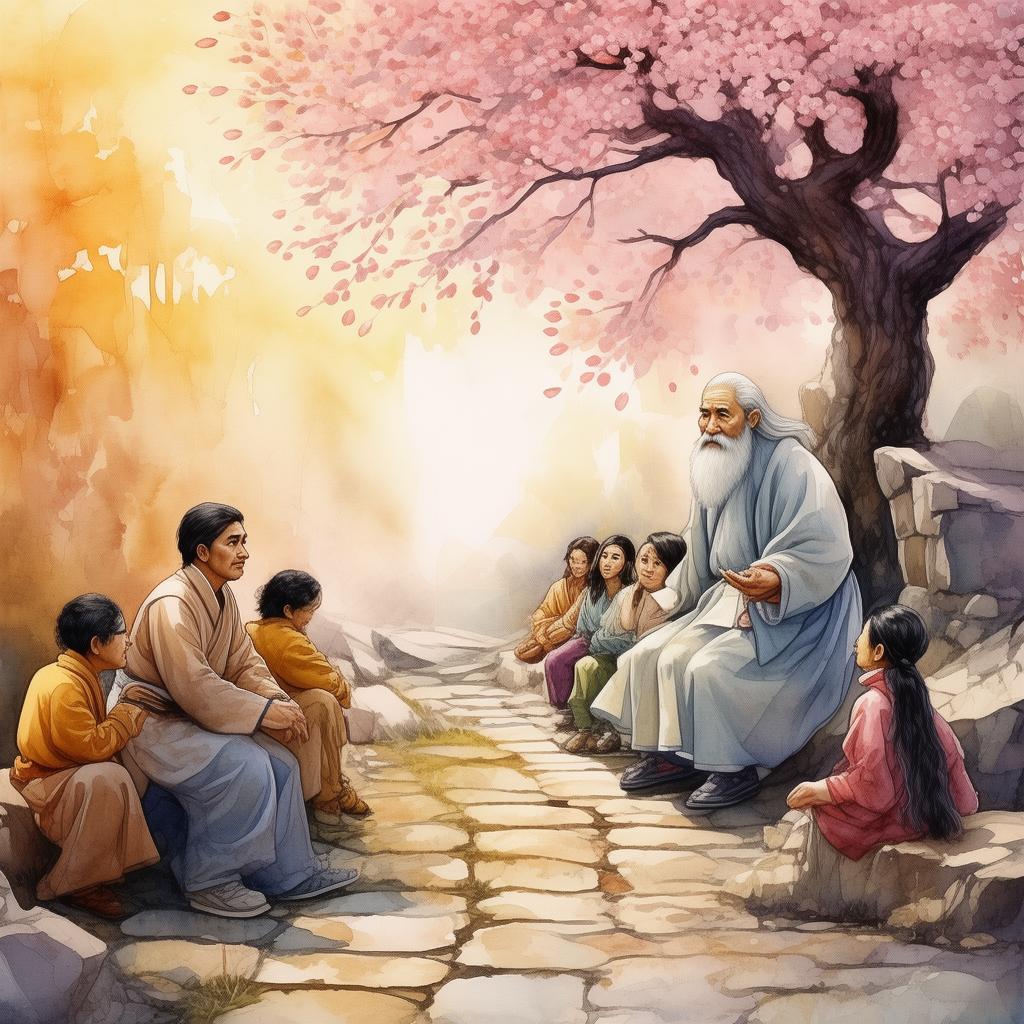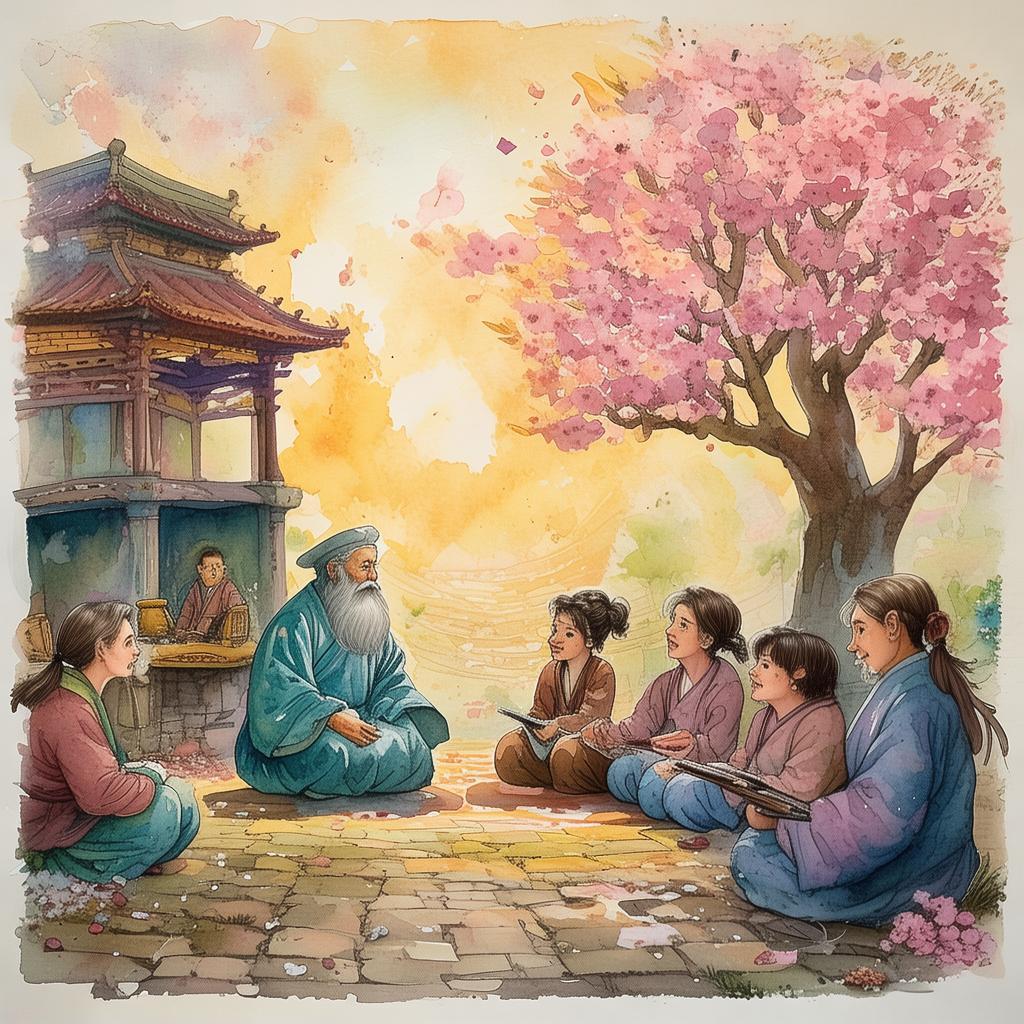The Head-Hugging Kid's Mysterious Dream
In a quaint village nestled in the lush mountains of China, there lived a young boy named Ming. Ming was known throughout the village for his peculiar habit of hugging his own head, a strange and unexplained quirk that had baffled the villagers for years. His parents, worried about his well-being, sought the advice of a wise old man known for his deep understanding of the ancient Chinese proverb, "To know yourself is to be wise."
One evening, as the sun dipped below the horizon, casting a golden glow over the mountains, Ming lay down to sleep. That night, he was visited by a most unusual dream. In the dream, he found himself in a vast, shimmering forest filled with towering trees whose leaves whispered secrets of the cosmos. Ming wandered through the forest, drawn by a sense of urgency, when he encountered a wise old spirit who spoke to him in a voice like the rustling of leaves.
"Child," the spirit said, "you have been chosen to discover the truth behind the proverb that you have been pondering. The answers you seek are hidden within the heart of the forest. But beware, for the path is fraught with challenges, and the truth may not be what you expect."
Ming awoke from his dream, his heart pounding with excitement and fear. He knew that his quest was no ordinary one, and that the wisdom he sought was deeply entwined with his own destiny. The next morning, he approached the wise old man, eager to share his dream and seek guidance.
"Old man," Ming said, "I have been chosen to uncover the truth behind the proverb 'To know yourself is to be wise.' But I am not sure where to begin."
The old man smiled, a twinkle of wisdom in his eyes. "Child, your journey is one of self-discovery. The path you seek is within you, not in the external world. The first step is to embrace the mystery of your own being."
And so, Ming embarked on his quest. He began by exploring the village, speaking to its inhabitants, and learning about their lives and wisdom. He listened to the tales of the elders, the dreams of the youth, and the fears of the children. Through their stories, Ming slowly began to unravel the layers of his own being.
One day, while wandering through the mountains, Ming stumbled upon an ancient, overgrown path. He followed it until he reached a hidden cave, its entrance hidden behind a waterfall. Inside the cave, Ming found a small, glowing crystal that emitted a soft, comforting light. As he reached out to touch it, the crystal spoke to him, its voice like the gentle breeze that danced through the leaves.
"The true wisdom lies not in the external world," the crystal said, "but within the heart. To know yourself is to embrace the darkness as well as the light, to accept your fears as part of your essence."
Ming's heart ached as he realized the truth of the crystal's words. He understood that the head-hugging habit was a manifestation of his fear of the unknown, his desire to protect himself from the complexities of life. With newfound clarity, Ming stepped out of the cave, ready to face the world with open eyes and an open heart.

The villagers watched in awe as Ming walked through the village, his head no longer hugging his own. They marveled at the transformation that had taken place within him, and soon, Ming's story spread far and wide.
Years passed, and Ming became a wise and respected elder in the village. He shared his journey with others, reminding them that true wisdom lies in self-awareness and acceptance. And so, the ancient Chinese proverb, "To know yourself is to be wise," continued to inspire and guide those who sought to understand the mysteries of the universe.
The Head-Hugging Kid's Mysterious Dream had not only brought Ming closer to wisdom but had also brought the wisdom of ancient proverbs to life for all who listened to his tale.
✨ Original Statement ✨
All articles published on this website (including but not limited to text, images, videos, and other content) are original or authorized for reposting and are protected by relevant laws. Without the explicit written permission of this website, no individual or organization may copy, modify, repost, or use the content for commercial purposes.
If you need to quote or cooperate, please contact this site for authorization. We reserve the right to pursue legal responsibility for any unauthorized use.
Hereby declared.
